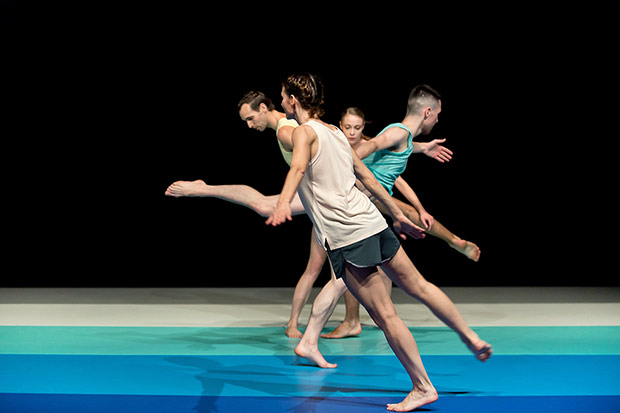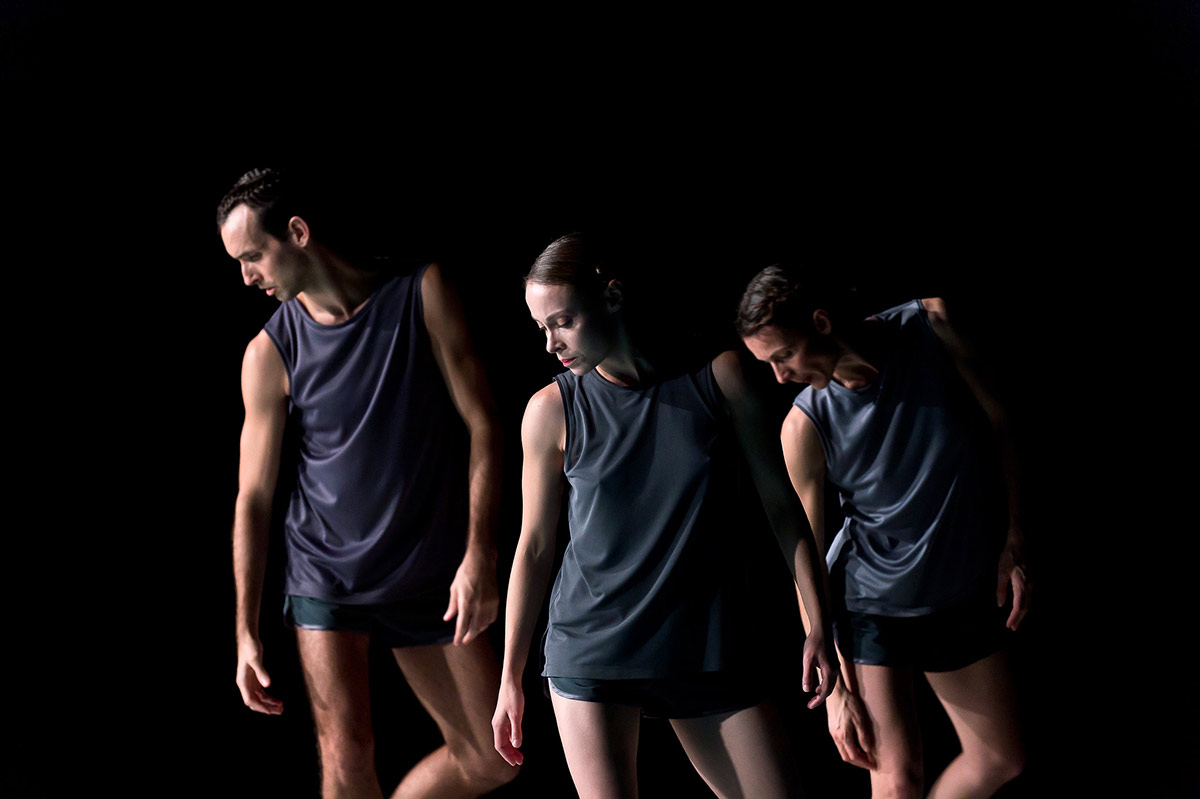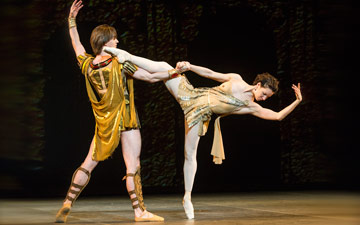
© Frédéric Iovino. (Click image for larger version)
Thomas Lebrun, as part of FranceDance UK
Another Look at Memory
★★★✰✰
London, Coronet Theatre
24 October 2019
www.ccntours.com
www.thecoronettheatre.com
We don’t see as many dance companies from France in the UK as you might expect. The Insitut Français decided to challenge this via FranceDance UK, a programme which has been bringing a series of choreographers and performers to a range of cities and venues in the last few months.
Thomas Lebrun founded his own company in 2000 and has a long list of created works. He is now Artistic Director at the Centre Chorégraphique National de Tours. The first showing of his work in Britain is Another Look at Memory, presented in the intimate setting of the Coronet Theatre. It’s a cool, precise, rigorous piece, set to Philip Glass’s choral work Another Look at Harmony, finding a language in dance and gesture which responds to, and reflects on, the music’s minimalism.
Two women and one man appear in initially dim lighting, barefoot and costumed in plain grey shorts and loose sleeveless t-shirts. They move initially in strict unison, in a series of simple gestures, arms raised or swinging, repeated and then varied slightly. Sometimes the hand gestures might be some kind of semaphore, but what it is saying remains inscrutable. Lighting levels increase, and they break out of unison as first one and then another peels away. Yet they always return to be reabsorbed. The only decorative element is the floor, with broad stripes of blues and greys, which although abstracted still seems to suggest the colours of a cloudy sky.

© Frédéric Iovino. (Click image for larger version)
There’s no difference in the steps for man or woman. It’s only over time, as the piece unspools, that you register the tiny differences that the same movement results in for different physiques. A gesture of lifting the hands to the face recurs. Sometimes the dancers repeat similar steps turned at ninety degrees to the audience or even with their backs to us. Lebrun investigates many ways of varying the viewpoint, just as the music repeats with small, incremental changes.
The dancers don’t look at each other, or at the audience: they don’t touch, or smile. They are undertaking a serious job of work here. Raphaël Cottin, Anne-Emmanuelle Deroo and Anne-Sophie Lancelin have worked with Lebrun for several years and look thoroughly attuned to his movement style and to each other. Their almost uncanny synchronicity is remarkable: this kind of repetition just wouldn’t work unless it was done with total precision. This is especially the case in the intimate setting of the Coronet, where the audience is so close to the performers that every drop of sweat is visible. The commitment is admirable. The dancers leave the stage only once, briefly, otherwise they remain in constant motion for the hour-long duration. Performing it is certainly a feat of memory.
Slowly the stage begins to darken again. Quite unexpectedly, since now we are well over halfway through, another male dancer (Maxime Aubert) enters, and initiates a major shift in tone. He has an energetic solo, and is then rejoined by the other three dancers, now dressed in pastel coloured t-shirts. It sounds like such a minor difference, but the effect was as if the sun had finally come out on a rainy day. The music soars, energy levels and light levels increase, and the dancers interact much more. For the first time, we see dancers partnering and lifting one another, with the women getting to do some of the lifting as well as the men. There’s still elements of repetition and unison from time to time, but there is much more looseness and freedom. The ending comes abruptly.
Dance in Europe has embraced minimalism with enthusiasm. Anne Teresa de Keersmaeker’s Fase set to Steve Reich is an example well known here, and if you admired that piece then Another Look at Memory would probably appeal, and could induce a trance-like meditative state. If minimalism, musical or otherwise, is not your thing then this would be much harder going.
Lebrun is clearly an experienced choreographer who knows exactly what effect he is after. His range may be much broader than this performance suggests: his cv refers to another work influenced by disco which sounds a long way from Another Look at Memory. He certainly has an excellent team of dancers to realise his creation. It did seem that the change of tone in the final section left a concluding impression of more warmth and accessibility than the initial austerities had portended. The audience at the Coronet certainly gave it a warm welcome, and it was good to see the dancers smiling and happy after such fierce sustained concentration.

















You must be logged in to post a comment.